#Maronite Catholic Church
Text
Note to self:
DON’T look up Maronite mummies.
HUGE mistake!
#dougie rambles#personal stuff#lebanon#Maronite Catholic Church#note to self#DO NOT RESEARCH#nightmare fuel
2 notes
·
View notes
Text
pls reblog + explain your answer in the tags!
#western/latin rites=roman; gallican; the orders (benedictine carmelite etc)#eastern = alexandrian; armenian; byzantine; east and west syriac (syro malabar maronite etc)#I think that's all of em sorry if i forgot anyone :(#catholic#catholicism#christianity#as always no 'other/see results' we poll like men.#sparked by a convo with my coworker (both of us are Latin Catholics rah)#in which she said her family has occasionally attended an Eastern rite church (Byzantine)#and I said that I've never even felt curious about the other rites and would never go to their church or attend their Mass lol#not bc of any animosity. love the eastern caths. it's just that I was baptized in this rite and my ancestors have always been latin caths#so. I'm just curious what yall think.#file under caroline
33 notes
·
View notes
Text
ST. SHARBEL CATHOLIC CHURCH,
EL PASO, YX






3 notes
·
View notes
Text
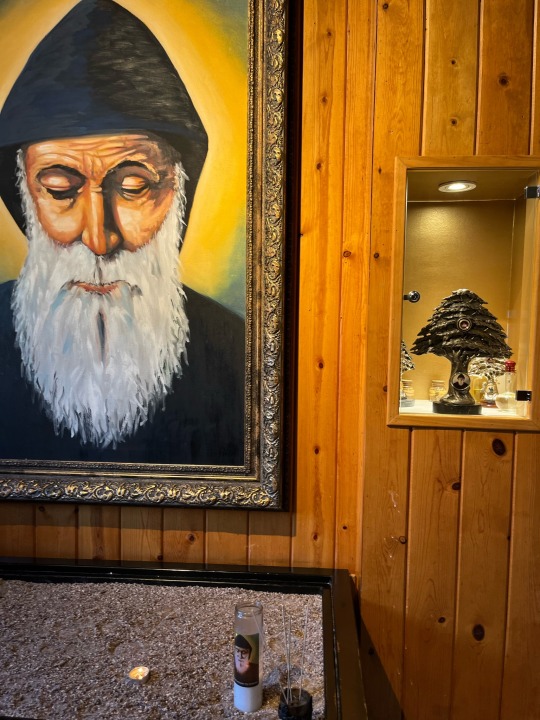
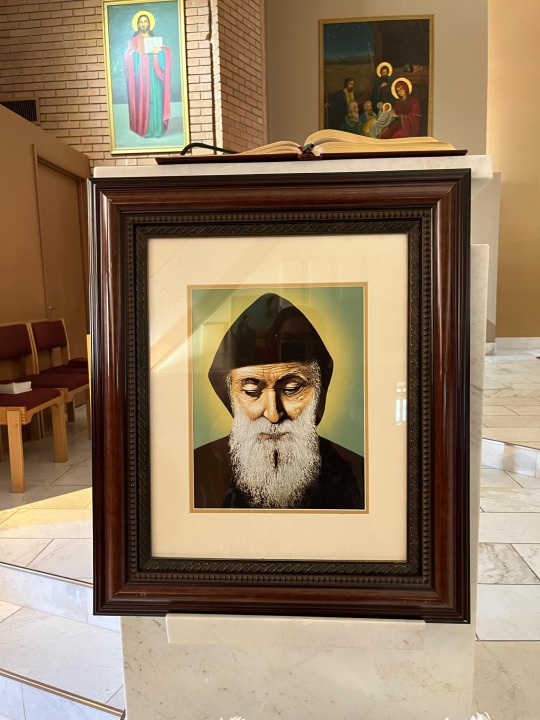
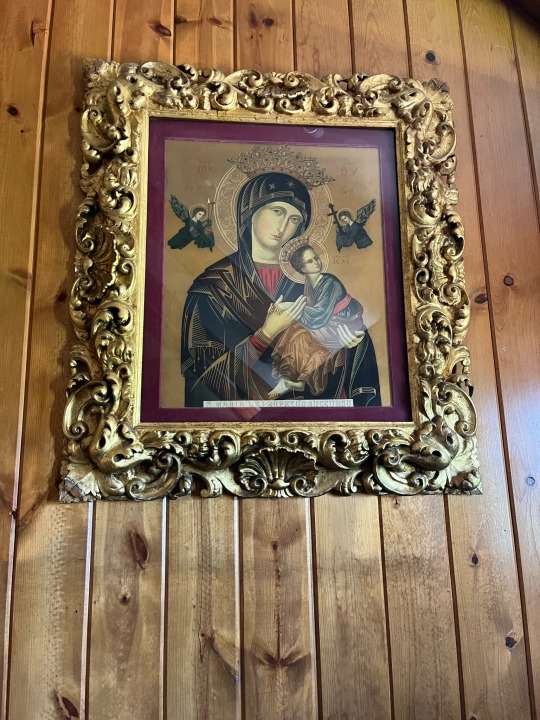
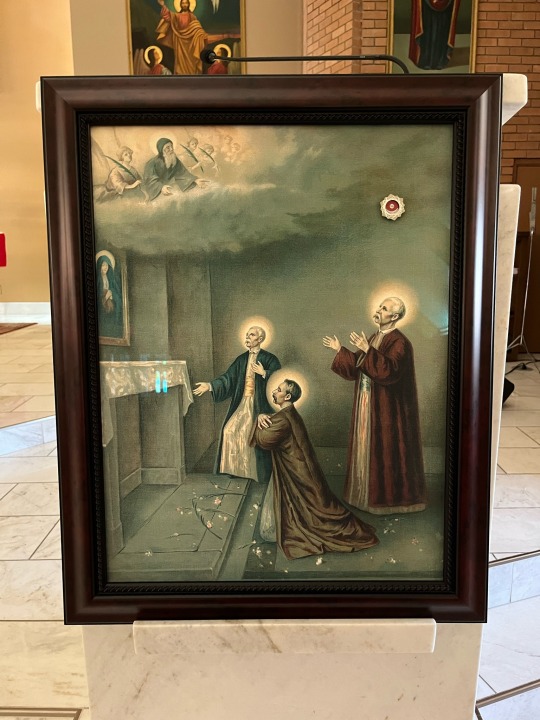
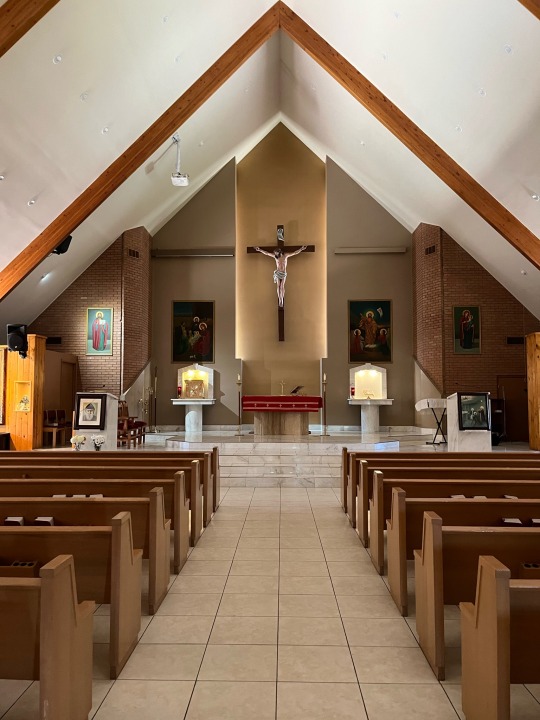
I love this Maronite Catholic Church! Might consider Daily Mass.
16 notes
·
View notes
Text
Why do people specify Roman Catholic?
Many people - even amongst Roman Catholics ourselves - may not be aware of this, but the Catholic church is actually made up of 24 sui iuris (autonomous) churches, all in communion with the Bishop of Rome. The dominant church is, clearly, the Latin or Roman Church, which makes up the vast majority of Catholics: the Eastern churches number only 18 million of the 1.3 billion Catholics in total.
The next largest is the Syro-Malabar church, centred in the Indian state of Kerala, and descending from a native church present in the region since around the 8th century. The next largest is the Ukrainian church.
The defining feature of these churches is that they use a different Rite than that of the Roman church: West and East Syriac, Armenian, Alexandrian, Byzantine.
The other main feature is a national one:
Under the Byzantine Rite, the most diverse, you have 14 churches: Albanian, Belarusian, Bulgarian, Croatian and Serbian, Greek, Hungarian, Italo-Albanian, Macedonian, Melkite, Romanian, Russian, Ruthenian, Slovak, and Ukrainian.
Under the Alexandrian rite, there are 3: Coptic, Ethiopian, and Eritrean.
Under the West Syriac rite, there are 3: Maronite, Syriac, Syro-Malankara.
Under the East Syriac rite, there are 2: Chaldean and Syro-Malabar.
Under the Latin rite, there is one: Roman (there are some other rites within the Roman church, such as the Ambrosian rite practiced in Milan).
Under the Armenian rite, there is one: Armenian.
All of these churches, though autonomous to a degree, are fully and entirely Catholic, fully united with the Roman Catholic Church.
Some are much older than others: the Maronite church, for example, has been extant since some time in the mid first millennium; while the Eritrean church was only formed in 2015.
151 notes
·
View notes
Text


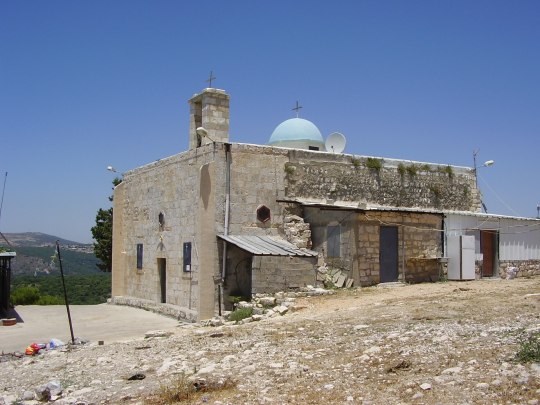

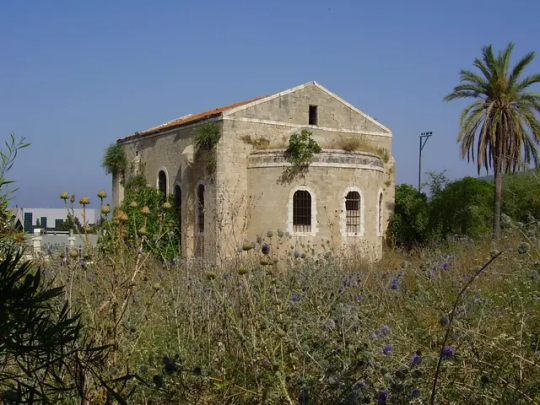

churches in palestine abandoned/destroyed after the 1948 nakba:
church of st. jacob, a melkite catholic church in the christian village of ma'alul. it was restored in 2010 and is currently managed by descendants of the village's original inhabitants. the rest of the village's land is owned by the jewish national fund.
church of our lady, a maronite church in the village of kafr bir'im. it is the only intact remainder of the village after it was destroyed by occupation forces in 1953. since 1972, it has been maintained by descendants of the kafr bir'im villagers who were displaced within palestine.
st. mary's church, a melkite catholic church in the christian village of iqrit. despite the villagers' appeals to the israeli supreme court to allow them to return, the village was destroyed by the idf in 1951. descendants of iqrit villages who were displaced within palestine today retain an outpost nearby and bury their dead in its cemetery.
mari yohanna church, a maronite church in the village of al-mansura. the maronite church requested that the villagers be allowed to return but were refused. the houses in the village have been completely leveled, and the collapsed church is the only structure still standing.
melkite catholic church in the village of al-bassa, to which almost all of the villagers belonged. occupying forces ordered them to bury younger people they had shot outside the church in front of them.
latin catholic church in the village of beisan, whose residents were expelled. the town was resettled and named beit she'an. the building is now the headquarters of the local branch of the likud party.
#palestine#worship#christian#nakba#my posts#yes i saw that one comment on this im ignoring them on purpose
361 notes
·
View notes
Photo
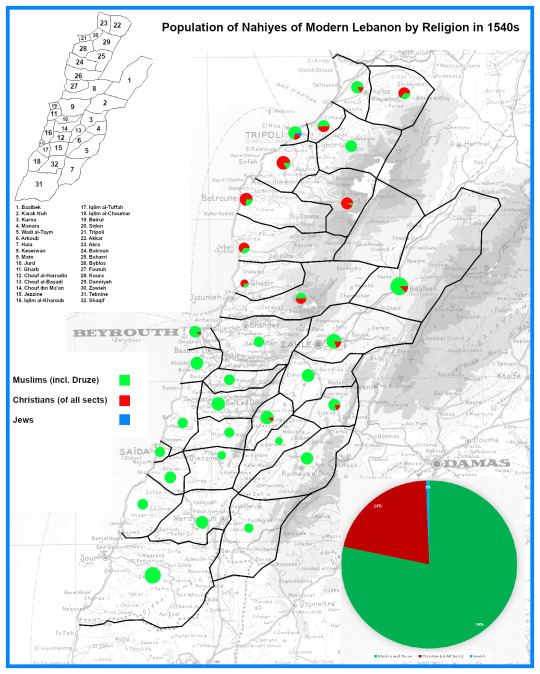
Religious Distribution in the Subdivisions (Nahiyas) of the Mount Lebanon Emirate in the 1540s according to Ottoman Tax Registries.
by u/R120Tunisia:
The map wasn't made by me. The original post is here though I modified it by adding a small graph that shows the overall percentages below.
The map uses various books that summarize the results of the tax registries as a source.
In case you might be wondering : "Wasn't Lebanon Christian majority ?" well at that point, no. The largest religious group at the time would have been the Druze followed by Shias. Note the Druze were technically part of the Muslim millet and didn't pay the Jizya so they were included in the Muslim category at the time.
The Druze though were far from united. They originated from the foothills of the Anti-Lebanon Mountains and were settled by the Ayyubids and Mamluks over the years along the central Levantine coast to guard from Crusader naval incursions and raids. In the absence of crusader threats, the various Druze clans started to fight among each other, with a divide appearing between Qaysi Druze clans (who claimed descent from Northern Arabian tribes) and Yamani Druze clans (who claimed descent from Southern Arabian tribes). The former were supported by local Sunnis and Shias while the latter had the support of local Ottoman authorities.
The Qaysis eventually gained the upper hand following the Battle of Ain Dara and most of the Yamani Druze were expelled from Lebanon with most moving into what is today Jabal al-Druze which was sparsely populated at the time (this was how Syria got most of its Druze as well). Meanwhile, the Qaysi clans that prevailed started to invite Christian peasants from the Mt Lebanon area as well as from all over the Levant into the area to repopulate the towns and villages left empty by the Yamanis and to become tenant farmers under them. These new immigrants were mainly Maronite but also Orthodox and Melkite to a lesser degree.
This Christian immigration would increase following the takeover of the Shihab dynasty, a Sunni family from the Anti-Lebanon Mountains, following the death of the last Druze Qaysi Ma'nid Emirs. The new dynasty were in frequent conflict with Druze landlords so to build a power base in the area they started to support the Maronite clergy and created local conditions friendly to Christian life (some Shihab Emirs would even convert to Christianity).
And finally two other factors : Christians tended to be poorer and rural (especially Maronites), and the rural poor tend to have higher birthrates, and at the time, there was a split among the local Orthodox population of the Levant that caused many to join the new Melkite Catholic Church leading to many members leaving their communities for sectarian reasons and moving into Lebanon to create new communities out of scratch (most notables of these is Zahlé, Lebanon's third largest city and the largest Christian majority town in the Middle East, which continues to have a Melkite majority to this day).
Tl;dr : in the late 17th and early 18th century following inter-Druze conflict and the takeover of the Shihab dynasty, a demographic shift occurred in what is today Lebanon that led to a huge decrease in the Druze population and an increase of the Christian population due to immigration (to re-populate areas emptied by the Druze who left and trigged by both the local conditions in the area as well as theological disputes within the Christian communities of the Levant) as well as higher birthrates, eventually leading to Christians becoming a slight majority in the area.
59 notes
·
View notes
Note
Hi can I ask a few questions about lent? You can ignore this if not. I am not religious at all and would like to try and observe this year.
From my understanding lent has already started but orthodox lent is this march- can I still observe then? Or is that not allowed?
Also, in your pinned post, it says you are maronite. Is that a separate sect (as in, different from catholic, orthodox, protestant?)
And finally, is sexual intercourse permitted during lent?
Sorry if this is a lot!
catholic lent has already started, yes! it's not a closed practice for catholics and afaik the same goes for orthodox christians (orthodox followers plz feel free to weigh in!) so I think it would be fine for you to observe it. hell, since you're not religious, you could try it any time of year. I'm not sure exactly what that would look like bc it's hard for me to conceptualize lent outside of a christian framework (and specifically its place in the full cycle of the liturgical year), but you should feel free to approach it however works for you imo. lent is a pretty self-directed thing even for christians; there are broad responsibilities—fasting (from food if safe to do so; some people fast from other things e.g. substances or—yes—sex, but it's not required), prayer/reflection, and almsgiving/works of mercy, but how we go about those things is open-ended. it's basically a time to identify and distance yourself from things that are barriers between you and god/your neighbor.
maronites are catholics! we're part of the roman catholic communion—all the churches that recognize the bishop of rome (aka the pope) as the highest church authority, which is the primary difference from orthodoxy. the catholic communion is made up of 24 "autonomous particular churches"; the latin church (what most people in the west think of when they hear "catholic") is one and the other 23 are "eastern catholic" churches including maronites, chaldean catholics, etc. this system was established so that after the great schism, eastern churches that wanted to remain in communion with rome could do so while still practicing our traditional liturgical rites in our traditional liturgical languages, rather than switching to western practices. for that reason a lot of eastern catholic liturgy resembles orthodox liturgy more than latin catholic liturgy, because we use many of the same liturgical rites. basically all eastern catholics are catholics but not all catholics are eastern catholics, and not all eastern christians are eastern catholics but all eastern catholics are eastern christians, and all orthodox christians are eastern christians but none of them are eastern catholics. if that makes any sense 😭
13 notes
·
View notes
Text
need some resources to learn more about christianity (specifically looking into catholic and maronite christianity but curious about other denominations), but it's honestly kind of hard and i can't really go to church. any advice?
also, i wanna learn a bit more about modesty without falling into tradwife or conservative content too,,,
27 notes
·
View notes
Photo

Today we celebrate our Venerable Father Maron of Syria. Saint Maron was a great ascetic who lived his life in ascesis and prayer. He spent almost all his time beneath the open sky in prayer, vigil, ascetical works and strict fasting. He obtained from God the gift of healing the sick and casting out demons. He counselled those who turned to him for advice to be temperate, to be concerned for their salvation, and to guard against avarice and anger. Saint Maron, a friend of Saint John Chrysostom, died before 423 at an advanced age. Some of Saint Maron’s disciples were James the Hermit, Limnius, and Domnina. He founded many monasteries around Cyrrhus, and converted a pagan temple near Antioch into a Christian church. It is this Saint Maron that the Maronite Christians trace back their origins - although originally part of the Eastern Orthodox Church, they are now under the jurisdiction of the Roman Catholic Church. May he intercede for us all + #saint #maroun #maron #maroon #syria #ascetic #ascesis #prayer #monk #holy #father #orthodox #saintoftheday (at Beqaa Valley, Lebanon) https://www.instagram.com/p/ConOIFNLwA3/?igshid=NGJjMDIxMWI=
15 notes
·
View notes
Text
SAINT OF THE DAY (July 24)

On July 24, the Catholic Church celebrates the life of St. Charbel Makhlouf, a Maronite Catholic priest, monk, and hermit who is known for working miracles both during his life and after his death.
On the occasion of his beatification in 1965, the Eastern Catholic hermit was described by Pope Paul VI as “a new, eminent member of monastic sanctity who, through his example and his intercession, is enriching the entire Christian people.”
Born into humble circumstances in Lebanon on 8 May 1828, Yussef Antoun Makhlouf was the youngest of Antoun Zaarour Makhlouf and Brigitta Elias al-Shediyaq's five children.
Antoun, who had been taken away from the family and forced into hard labor, died when his youngest son was only three.
Yussef studied at the parish school and tended to his family's cow.
Engaged in prayer and solitude from a early age, he spent a great deal of time outdoors in the fields and pastures near his village, contemplating God amid the inspiring views of Lebanon's valleys and mountains.
His uncle and guardian Tanious wanted the boy to continue working with him, while his mother wanted him to marry a young woman.
Yussef had other plans, however, and left home in 1851 without informing anyone.
Yussef would become “Brother Charbel,” after making a pilgrimage on foot to his new monastic home.
In this, he followed the example of his maternal uncles, who were already living as solitary monks at the Hermitage of Saint Paul in the Qadisha Valley.
Charbel took his monastic vows in November of 1853, during a solemn ceremony that was closed to the public and off-limits even to his family.
He subsequently studied for the priesthood and was ordained, returning to the Monastery of St. Maron.
The priest-monk lived and served in the monastery for 19 years, showing great devotion to the life of prayer, manual work, and contemplative silence.
Charbel's superiors observed God's “supernatural power” at work in his life, and he became known as a wonder-worker even among some Muslims.
In 1875, he was granted permission to live as a solitary monk in a nearby hermitage dedicated to Saints Peter and Paul.
Rigorous asceticism and a profound union with God continued to characterise the monk's life for the next 23 years.
Deeply devoted to God's Eucharistic presence, he suffered a stroke while celebrating the Divine Liturgy of the Maronite Catholic Church on 16 December 1898. He died on Christmas Eve of that year.
St. Charbel's tomb has been a site for pilgrimages since his death. Hundreds of miracles are believed to have occurred through his intercession with God, both in Lebanon and around the world.
Pope Paul VI beatified him on 5 December 1965 and canonised on 9 October 1977.
4 notes
·
View notes
Note
Hi Father is there anything against going to masses in other Catholic rites like the Maronite Rite or the Byzantine Rite or is that permissible if you’re just curious what they’re like?
This is just fine. Both of these are completely in union with the Church of Rome
12 notes
·
View notes
Text
SAINT CHARBEL AND PRAYER OF THE HOLY ROSARY
Saint Charbel was a Maronite monk and priest who lived in Lebanon. The community in Lebanon remembers the holy man for his miraculous healings. Fr Charbel (Saint Charbel) - in his latter years a holy hermit - went to Almighty God from this life on 24th December 1898.
St Charbel was buried outside the monastery in a grave adjacent to the church wall. In the records of the Monastery of St Maroun in Annaya, Fr (Saint) Charbel's superior wrote that because of what Charbel would accomplish after his death, he had no need to write about his life but was satisfied with stating that Charbel had kept his vows like an angel and not like a human.
Starting from the time of his burial, St Charbel's tomb emanated a bright light. As a result, the tomb was opened on April 15th 1899, four months after St Charbel's death. The saint's body was found to be intact with no signs of change, a miraculous sign.
In 1950, St Charbel's tomb at the Maronite monks' monastery high on a mountain in Lebanon was opened yet again, because a light had frequently been seen in the vicinity. To the astonishment of all the body of the priest who had been buried there for fifty-two years was as though he had been merely asleep that half a century. Even his clothing was intact.
Why this Wonder?
People began to pray to St Charbel to ask his intercession with God on their behalf. The monastery began to keep records of miracles performed through the intercession of Fr Charbel from 1950 onwards. There are over 26,000 miracles attributed to the intercession of St Charbel Makhlouf since 1898.
Saint Pope Paul VI beatified Charbel
At the closing of the Second Vatican Council, on December 5, 1965, St Charbel was beatified by Saint Pope Paul VI, who said:
"Great is the gladness in heaven and earth today for the beatification of Charbel Makhlouf, monk and hermit of the Lebanese Maronite Order. Great is the joy of the East and West for this son of Lebanon, admirable flower of sanctity blooming on the stem of the ancient monastic traditions of the East, and venerated today by the Church of Rome ... the holy monk of Annaya is presented as one who reminds us of the indispensable roles of prayer, hidden virtues and penance ... A hermit from the Lebanese mountain is enrolled among the blessed ... a new, eminent member of monastic sanctity is enriching the entire Christian people by his example and his intercession ... In a world largely fascinated with riches and comfort, he helps us understand the paramount value of poverty, penance, and ascetism to liberate the soul in its ascent to God ..." [1]
Canonisation
St Charbel was canonised in 1977 by Saint Pope Paul VI. At the time, Bishop Francis Zayek wrote, "St Sharbel is called the second St Anthony of the Desert, the Perfume of Lebanon, the first Confessor of the East to be raised to the Altars according to the actual procedures of the Catholic Church, the honor of our Aramaic Antiochian Church, and the model of spiritual values and renewal. Sharbel is like a Cedar of Lebanon standing in eternal prayer, on top of a mountain." [2]
Pilgrimage
St Charbel's tomb has been a site for millions of pilgrimages ever since his burial.
Preparation for Holy Mass
St Charbel used to spend half a day preparing to celebrate Mass, and half a day in thanksgiving. During the Holy Mass he offered the Eucharist to the Holy Trinity for the conversion of sinners.
History of Saint Charbel
History of St Charbel can be accessed at http://saintcharbel.net.au/history/
Some healings which are attributed to St Charbel
Some healings which are attributed to St Charbel can be accessed at https://epicpew.com/6-incredible-miracles-saint-charbel/
Prayer to Saint Charbel
Saint Sharbel, vessel of sweet perfume, pray for me. O merciful God, who honored Saint Sharbel through the working of great miracles, have mercy on me and grant me what I ask through his intercession. To You be glory forever, Amen.
Rosary
One of St Charbel's spiritual practices we can imitate is prayer of the Holy Rosary.
[1] Saint Charbel http://saintcharbel.net.au/history/
[2] Charbel Makhlouf
HOW TO PRAY THE ROSARY
Visit the following link
THE ROSARY
THE ROSARY
On the cross the Creed is prayed:
I believe in God, the Father Almighty, Creator of heaven and earth. And in Jesus Christ, His only Son, our Lord, Who was conceived by the power of the Holy Spirit, born of the Virgin Mary, suffered under Pontius Pilate, was crucified, died and was buried. He descended into hell. The third day He rose again from the dead. He ascended into heaven and is seated at the right Hand of God, the Father Almighty. From thence He shall come, to judge the living and the dead. I believe in the Holy Spirit, the holy Catholic Church, the Communion of Saints, the forgiveness of sins, the resurrection of the body and the life everlasting. Amen.
On the single beads the Our Father is prayed:
Our Father, Who art in heaven, hallowed be Thy Name;
Thy Kingdom come, Thy Will be done, on earth as It is in heaven.
Give us this day our daily bread, and forgive us our trespasses, as we forgive those who trespass against us.
And lead us not into temptation, but deliver us from evil. Amen.
On the sets of beads, the Hail Mary is prayed:
Hail Mary, full of grace, the Lord is with thee. Blessed art thou among women, and blessed is the Fruit of thy womb, Jesus.
Holy Mary, mother of God, pray for us sinners now and at the hour of our death. Amen.
At the end of each set of beads, the Glory Be is prayed:
Glory be to the Father and to the Son and to the Holy Spirit, as it was in the beginning, is now and ever shall be, world without end, Amen.
This is followed by the Fatima prayer:
O my Jesus, forgive us our sins, save us from the fires of hell, and lead all souls to heaven, especially those most in need of Thy mercy. Amen.
Many people recite five to fifteen mysteries of the Holy Rosary each day:
The Joyful Mysteries (always recited on Mondays and Thursdays)
1. The Annunciation
2. The Visitation
3. The Nativity
4. The Presentation
5. The finding of the Child Jesus in the Temple
The Sorrowful Mysteries (always recited on Tuesdays and Fridays)
1. The Agony in the Garden
2. The Scourging at the Pillar
3. The Crowning with Thorns
4. The Carrying of the Cross
5. The Crucifixion and Death of Jesus on the Cross
The Glorious Mysteries (always recited on Wednesdays, Saturdays and Sundays)
1. The Resurrection
2. The Ascension
3. The Descent of the Holy Spirit upon the Apostles at Pentecost
4. The Assumption of Our Lady body and soul into Heaven
5. The Crowning of Our Lady as Queen of Heaven
At the end of the Rosary recite the Hail Holy Queen:
Hail Holy Queen, Mother of mercy, hail our life, our sweetness and our hope. To thee do we cry, poor banished children of Eve. To thee do we send up our sighs, mourning and weeping in this vale of tears. Turn then, most gracious Advocate, thine eyes of mercy towards us, and after this our exile, show unto us the blessed Fruit of thy womb, Jesus.
O clement, O loving, O sweet Virgin Mary, pray for us now, and at the hour of our death. Amen.
Follow the Hail Holy Queen by:
Pray for us O Holy Mother of God
That we may be made worthy of the promises of Christ
LET US PRAY
O God, Who by Thy Life, Death and Resurrection didst purchase for us the rewards of eternal salvation
Grant, we beseech thee, that, while meditating upon these mysteries of the most holy Rosary of the Blessed Virgin Mary
We may both imitate what they contain
And obtain what they promise through the same Christ our Lord
Amen.
JOIN ONLINE ROSARY AT
Link to online Rosary
youtube
youtube
With thanks to usccb.org, saintcharbel.net.au, epicpew.com, wikipedia.org, comepraytherosary.org and youtube
5 notes
·
View notes
Text

St. Maroun also known as Saint Maron, was a 5th century Syriac Christian monk who after his death was followed by a religious movement that became known as the Maronites. The Church that grew from this movement is the Maronite Church. St. Maroun was known for his missionary work, healing and miracles, and teachings of a monastic devotion to God.
Background
St. Maroun, born in the middle of the 4th century in Syria, was a priest who later became a hermit, retiring to a mountain of Taurus in the region of Cyrrhus, near Antioch. His holiness and miracles attracted many followers, and drew attention throughout the empire. St. John Chrysostom sent him a letter around AD 405 expressing his great love and respect, and asking St. Maron to pray for him.
The Maronite movement
Maroun is considered the Father of the spiritual and monastic movement now called the Maronite Catholic Church. This movement had a profound influence in Lebanon. St. Maroun spent all of his life on a mountain in Syria. It is believed that the place was called “Kefar-Nabo” on the mountain of Ol-Yambos, making it the cradle of the Maronite movement.
The Maronite movement reached Lebanon when St. Maroun’s first disciple Abraham of Cyrrhus who was called the Apostle of Lebanon, realised that there were many non-Christians in Lebanon, so he set out to convert them to Christianity by introducing them to the way of St. Maroun. The followers of St. Maroun, both monks and laity, always remained faithful to the teachings of the Catholic Church. St. Maroun’s feast day is celebrated on February 9th.
Spirituality
Maroun’s way was deeply monastic with emphasis on the spiritual and ascetic aspects of living, contrasted by the fact that the ‘Khoury,’ or, ‘priest’ of the Maronite rite can marry. For St. Maroun, all was connected to God and God was connected to all. He did not separate the physical and spiritual world and actually used the physical world to deepen his faith and spiritual experience with God.
St. Maroun embraced the quiet solitude of the mountain life. He lived his life in open air exposed to the forces of nature such as sun, rain, hail and snow. His extraordinary desire to come to know God’s presence in all things allowed St. Maroun to transcend such forces and discover that intimate union with God. He was able to free himself from the physical world by his passion and fervour for prayer and enter into a mystical relationship of love with God.
Mission
St. Maroun was a mystic who started this new ascetic-spiritual method that attracted many people in Syria and Lebanon to become his disciples. Accompanying his deeply spiritual and ascetic life, he was a zealous missionary with a passion to spread the message of Christ by preaching it to all he met. He sought not only to cure the physical ailments that people suffered, but had a great quest for nurturing and healing the “lost souls” of both non-christians and Christians of his time.
This missionary work came to fruition when in the mountains of Syria, St. Maroun was able to convert a temple into a Christian Church. This was to be the beginning of the conversion to Christianity in Syria which would then influence and spread to Lebanon. After his death in the year 410, his spirit and teachings lived on through his disciples and today he lies in “brad” village to the north of Aleppo.
3 notes
·
View notes
Text
Healing Mass in one hour!!
9 notes
·
View notes
Text
Maronite Church in Lebanon celebrates beatification of 17th-century scholar and patriarch
An estimated 7,000 people gathered to celebrate the beatification of Patriarch Estephan Douaihy on Aug. 2, 2024, in Bkerké, Lebanon. / Credit: Marwan Semaan/ACI MENA
ACI MENA, Aug 5, 2024 / 14:28 pm (CNA).
In a ceremony that blended centuries-old tradition with new hope, the Maronite Catholic Church celebrated the beatification of Patriarch Estephan Douaihy on Friday, Aug. 2, in Bkerké,…
0 notes